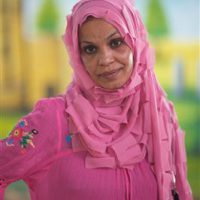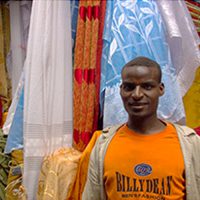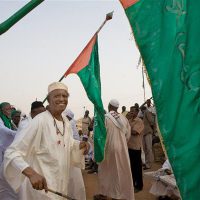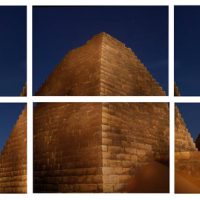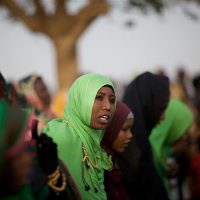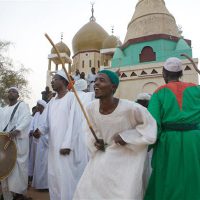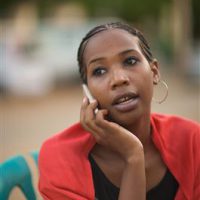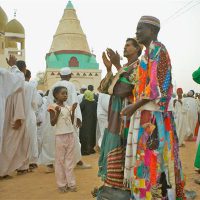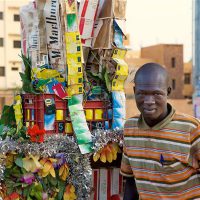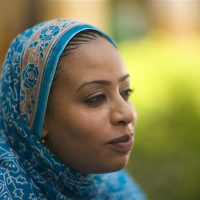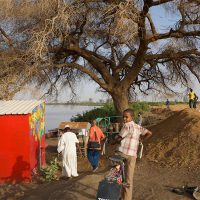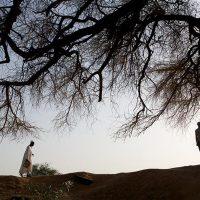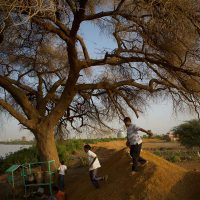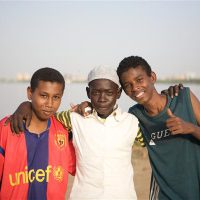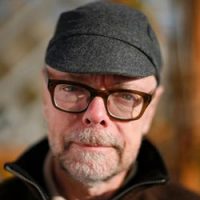I flew in to Khartoum many times before I got off the airplane. On trips to Addis Ababa, Ethiopia, a country with which I have a long familiarity, return flights to Europe often stopped at Khartoum to refuel. The country and the city seemed so mysterious. I regarded the passengers getting on at Khartoum with envy; they must have exotic stories to tell, I thought, whereas I was merely coming from wartorn, Red Terror stricken Ethiopia, where I was a political officer at the Embassy. Many years and a whole career later I was asked by Virginia Shore of the Art in Embassies Program if I would do a photographic essay on Sudan for the newly constructed embassy building in Khartoum. I accepted eagerly and began planning a trip. I Googled “tourism Sudan” looking for what others might have found worthy in the country, but I got essentially no hits…not exactly a booming tourist market.
What I did find had me searching for a lunar calendar. Sudan has many pyramids, perhaps more than Egypt, though much smaller. The pyramids of Meroe in the moonlight…that was a starting point. I picked dates for the trip that gave me a full moon and the night after. The PAO at post, Judith Ravin, found a contact at the Ministry of Antiquities who could get me night access to the site. I found a congenial and resourceful driver and we took off into the desert. The pyramids are a dramatic sight, rising steeply from the sand dunes. We sat waiting on the uncomfortably hot sand waiting for moon rise, then got to work adding artificial light on the pyramids to create a dramatic and otherworldly scene. I used 30 second exposures, the longest I can take without reading the manual. The results were as eiree and interesting as I had hoped.
Back in Khartoum I was unsure what to do next. I shot many photos of modern Khartoum; when I was flying through decades ago the area around the airport looked semi-rural, now it was full of thoroughly modern high-rises in intense colors. I shot scenes in the various markets, the weekly celebration of the Sufis in outer Omdurman, streetscapes and scenes of everyday life, but what finally started to coalesce for me was a series of portraits of educated, professional Sudanese women, or young women studying at university. The result was a group of portraits of ethnically very diverse, poised and elegant women. When Art in Embassies and I were editing the images we included a group of 20 of these portraits as a symbol of American commitment to improving the status of women in a culture where they face many challenges, and a celebration of their emerging importance in Sudanese society. On a subsequent trip to Khartoum to help install the new collection I noticed Sudanese Embassy employees were intensely interested in these portraits. Some male staff members found it a bit shocking that we put up pictures of women, but others got the point immediately. Many gathered in front of the portraits trying to guess what part of the country each of the women came from.
Ms. Ravin, the PAO, asked me to contribute to a project documenting a timeless, village way of life on a small island at the confluence of the White Nile and the Blue Nile in the heart of the Khartoum metropolitian area. A way of life that was about to disappear under a wave of urban development made possible by a new bridge to the island. I met many Sudanese photographers who also worked on this project, and our joint efforts were eventually shepherded by Ms. Ravin into print as a book.
In the month I spent in Sudan I found the Sudanese amazingly friendly, both to me and to each other. I found a nucleus of creative people, artists, editors, photographers, and journalists, not a large group but very active and well informed. And political activists as well. I enjoyed my ability to go anywhere and get around easily in taxis and on buses, when Embassy people, for quite good reasons, were subject to extremely strict security rules. The society, at least in Khartoum, seemed ready for change. At night my friends and I would sit out on tables set out along a sidewalk, drinking tea and talking, men and women together. I photographed women who were doctors or attorneys, and others who were studying to be scientists and engineers. It was possible to imagine a new future taking shape.
